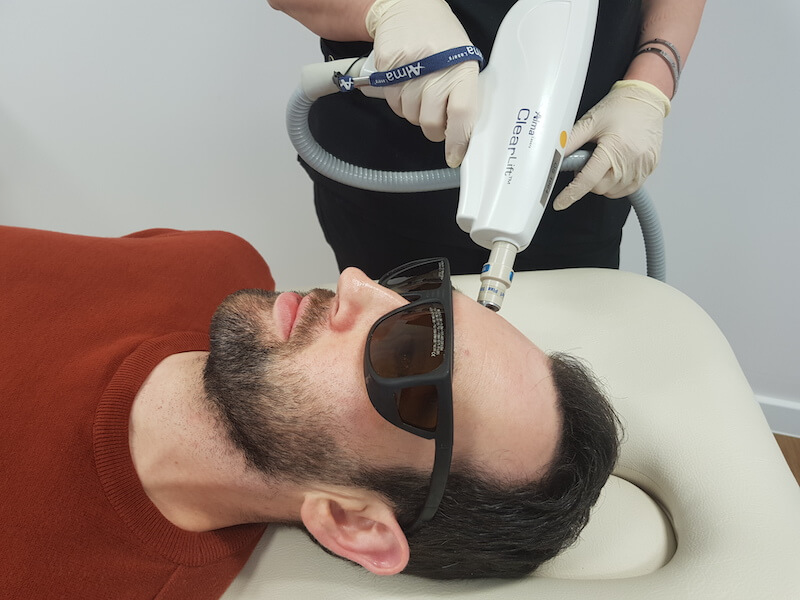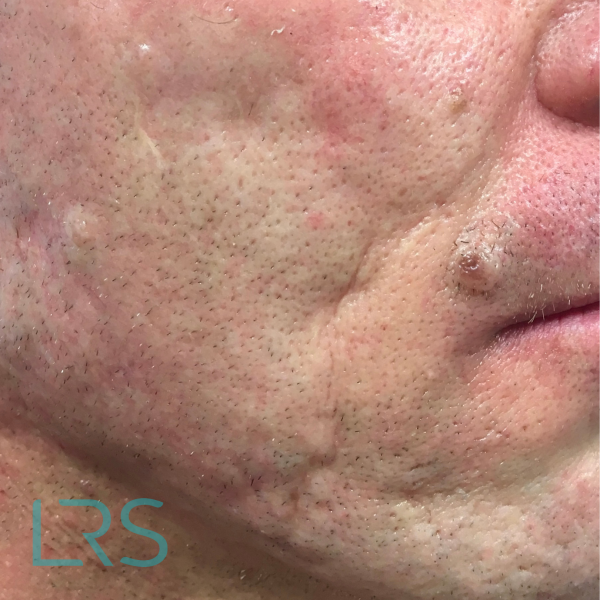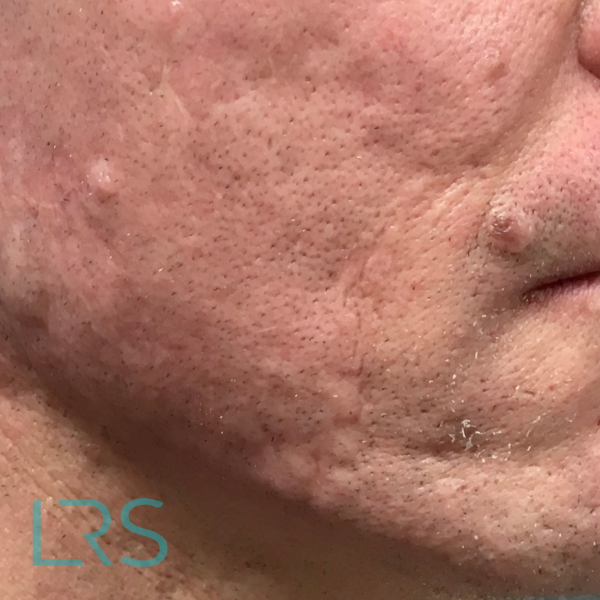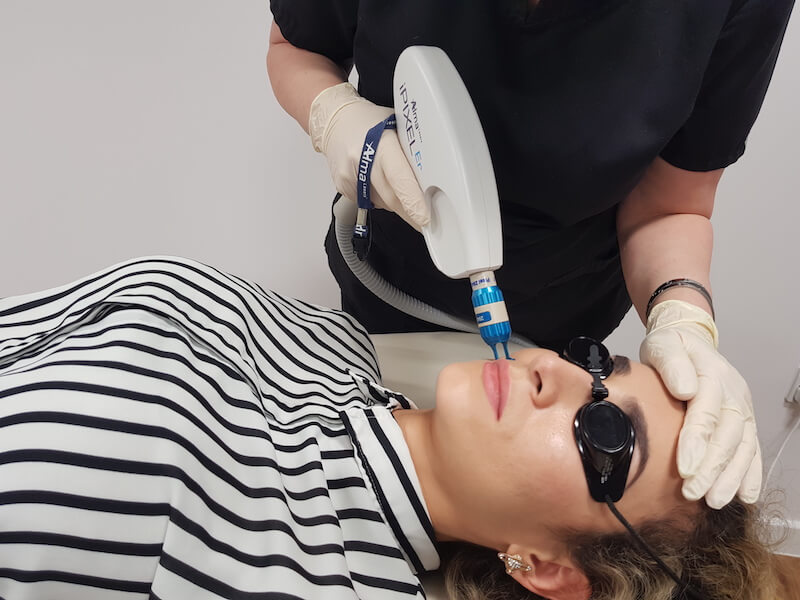Acne
Scarring Treatment
Acne scars are permanent textural changes and indentations that occur on the skin as a result of severe acne.
The appearance of acne scaring can be treated in various ways, including Dermal Filler with Hyaluronic Acid, Laser Skin Resurfacing and Microneedling with SkinPen.
0% Finance Options
Dermatology-Led
CQC-Registered
Complimentary Consultation
Acne Scarring Treatment London
What is Acne Scarring?
The term “scarring” is not used for the temporary red and brown marks left early after acne has occurred as these marks will almost always improve without treatment.
Acne leaves three major types of scars:
- Ice pick: deep but small pits
- Boxcar: sharp angles and edges; can be shallow or deep
- Rolling: tend to be wide and shallow (a wavy look) caused by damage under the surface
What are the main causes of acne scarring?
Post severe acne, large pus-filled spaces known as acne cysts are formed. These cysts destroy skin tissue which is not replaced during the healing process. When the cyst eventually empties and the area heals, it usually leaves behind an indentation (or scar) on the face, chest or back. The scarring can appear lumpy which is known as “hypertrophic” or “keloid” scarring.

Acne Scarring Treatments
At London Real Skin, we provide a full range of acne treatments to reduce scarring and improve overall skin appearance on the face, chest and back. In some cases, a combination of different treatments is required.
The ideal treatment will depend on four main factors:
- Skin type (skin type is classified according to the amount of pigment in the skin)
- Type of scar (scars can be” rolling”, “atrophic”,” box car”, “ice pick” or “anchored”)
- Downtime available (time it takes the skin to heal after the procedure)
- Cost of the procedure
Benefits of acne scarring treatment
- Post treatment, the skin will be more hydrated, have a smoother, tighter texture and the scars will appear less visible.
- Treatment options include popular advanced technological methods that are FDA approved and are clinically proven to treat acne scarring safely and effectively.
- Can treat many areas including the face, back, neck and chest.
- Results are visible either immediately or within 2 weeks of treatment, depending on the treatment option chosen, and are long lasting.
- Downtime is considered moderate to minimal, depending on the treatment procedure.
- Suitable on all skin types.
- All treatments are carried out by Nurses and Aesthetic Practitioners who are highly skilled and experienced in treating acne scarring with a variety of different methods.
Popular Treatments

Dermal Filler

Laser Skin Treatments

Micro-Needling
Before & After





Frequently Asked Questions
Each person is different and so will require a personalised approach to treating their acne scarring. We have a number of evidence based treatments here at the clinic that are effective and safe in reducing and minimising acne scarring.
Your treatment plan may involve microneedling, dermal filler injections, laser treatment, and the use of skincare products, which will all be discussed with you during your initial in-depth skin consultation. Factors that can determine a treatment option include skin type, type of scarring, the downtime required and the cost of the different procedures.
Acne scarring treatments can provide long lasting results. Results may vary according to each patient. These are dependent on a number of factors including lifestyle, age and medical history.
Acne scar treatment is relatively painless. Any dermal fillers used for injecting contain a local anaesthetic so you may feel a small pin-prick initially. And during Skinpen microneedling treatment, we also use a topical anaesthetic which numbs the area.
Laser treatment may also make the skin feel hot like a sunburn, but we will advise on aftercare to help make this a more comfortable and easy experience for you.
With Dermal Filler, there may be some bleeding during the treatment. As a result, there may be some bruising and swelling in the injected area that can last for 24 to 48 hours. Your Practitioner may recommend applying ice for 15 minutes afterwards on the injected area to minimise swelling and to make it more comfortable and assist with the healing process.
Acne on its own will usually clear up or subside periodically whilst acne scars may remain due to damaged skin. Scarring of the tissue is usually a result of trauma, picking and scratching which can cause scarring during the healing process.
Our highly skilled and experienced practitioners will meet with you to deeply understand your concerns and provide a bespoke treatment plan that will help improve the appearance of the skin.


